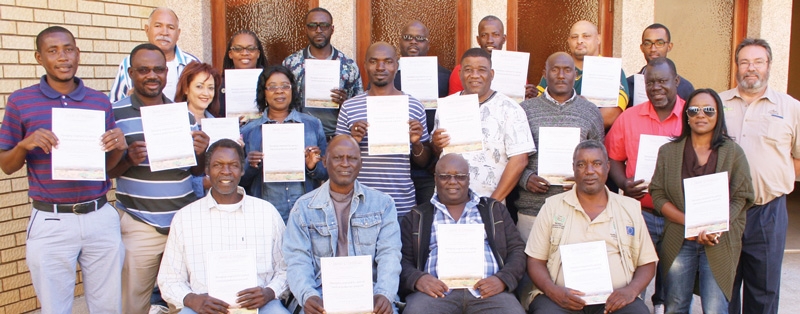
Preparing farmers for a return of grazing

Livestock farmers converged on Windhoek last week to attend a training session on rangeland management under the guidance of Agra Provision. The farmers learned how to align livestock numbers with available grazing, with particular emphasis on the difficult months ahead before the start of the next rain season.
The training was well attended by both upcoming and established farmers.
During the training programme, participants were exposed to the principles of livestock production, the annual growth cycle of grasses, determining the fodder needs of livestock, estimating fodder availability and aligning fodder availability to forage needs of livestock and monitoring rangeland condition. They also learnt about how to: grow more grass and to plan a rangeland management system on the farm or in communal areas.
Bertus Kruger, Agra ProVision’s Rangeland Management Technical Advisor said the training covered the major components of rangeland management. “Livestock farming can only be sustainable if there is sufficient grass and browse resources. The training course therefore comes at the right time to prepare and educate farmers on the fundamentals of rangeland management,” he explained.
Kruger noted that during the practical sessions, they employed a scientific approach based on collecting samples and using this data to calculate forage availability. Samples account for the composition of the grass sward, which is subdivided into perennial grasses, annual grasses and Aristida type of grasses. He said, “Aristida grasses are usually not quantified, as these are hardly utilised by livestock. Annual grasses are nutritious and palatable, but they only last for a few months before they disintegrate if not grazed by the middle of the dry season. Perennial grasses on the other hand constitute the main fodder reserve with the potential to last throughout the dry season.”
Participants valued the content and timing of the training. One of the participants, Chris Hango from the Omusati region said the training was a real eye opener, because most of time farms only concentrate on animal husbandry and not rangeland management. “What stood out for me was learning about the different types of grasses and how to measure the carrying capacity. Today, I am very confident that with the newly acquired knowledge, I can succeed in my farming. I therefore recommend this training to other producers countrywide,” he proudly said.
The sessions were a combination of both theory and practical sessions, giving the participants the necessary all-round knowledge, skills and expertise. At the end of the training course, the participants were able to develop rangeland management plans that will guide them to implement planned grazing management on their farms.













































